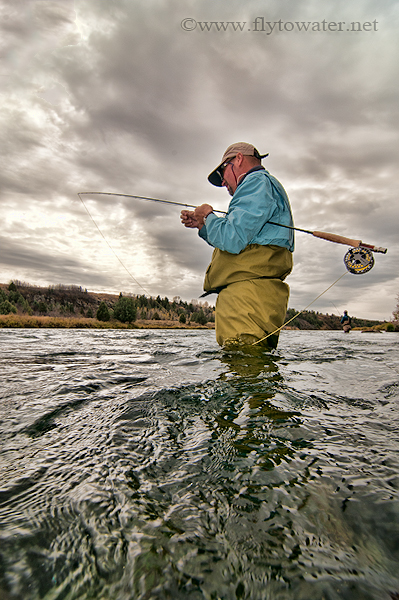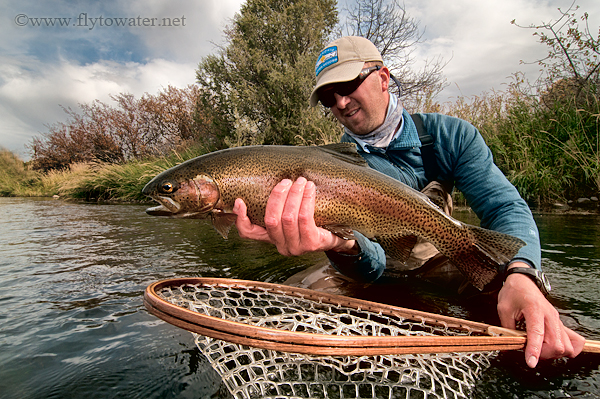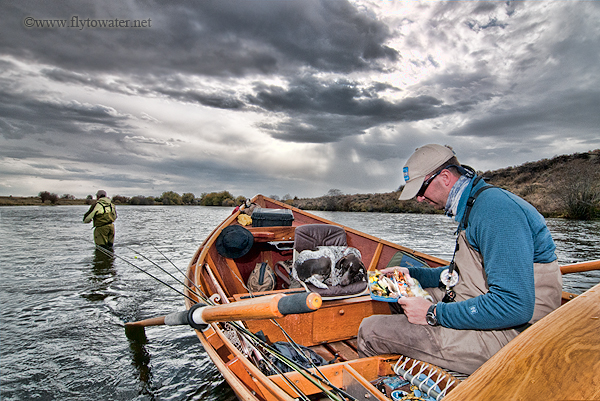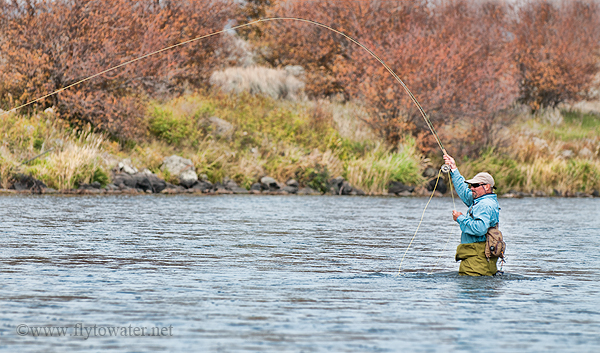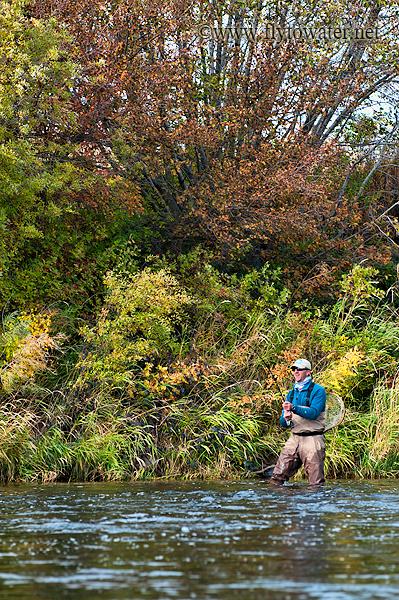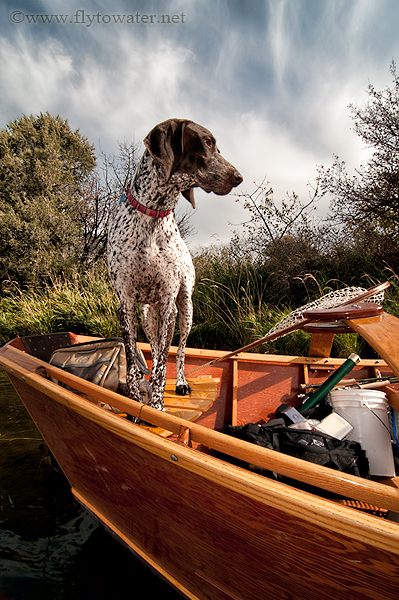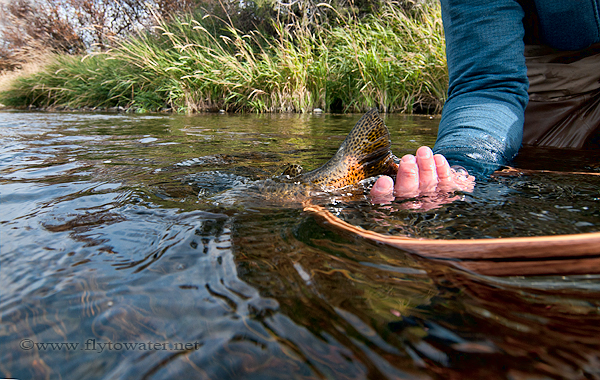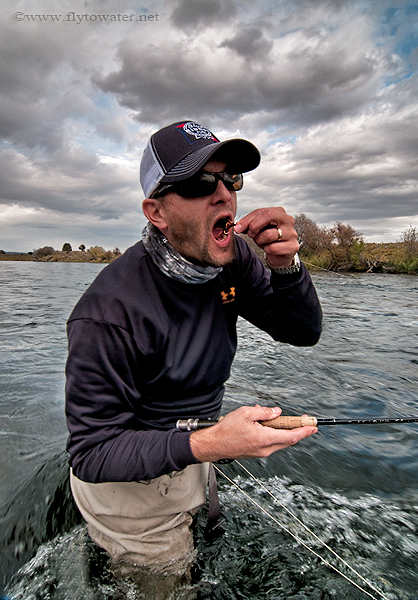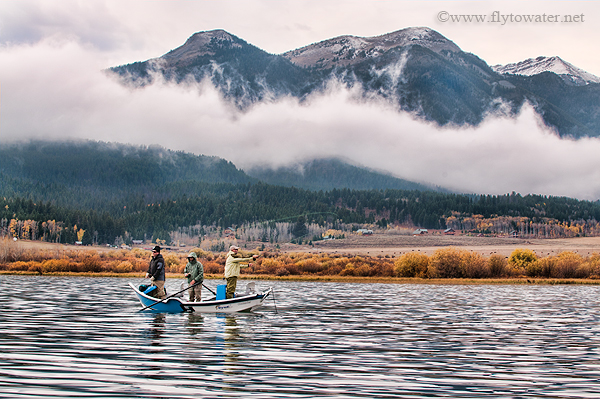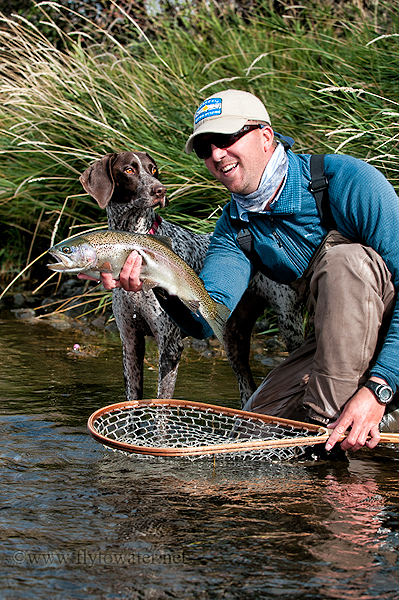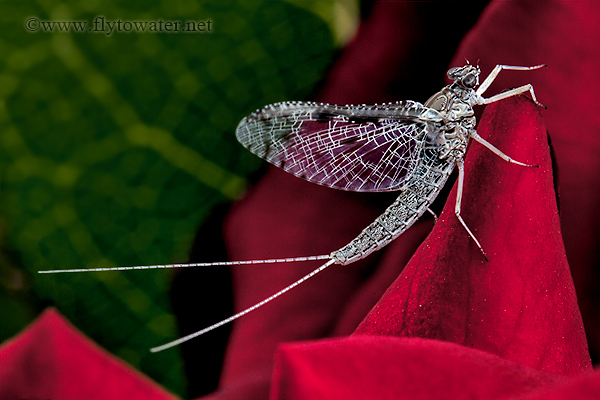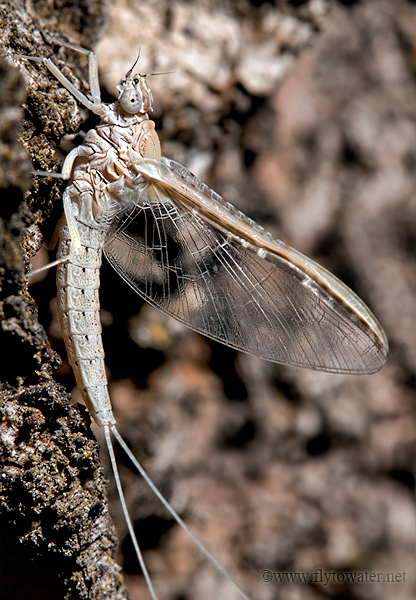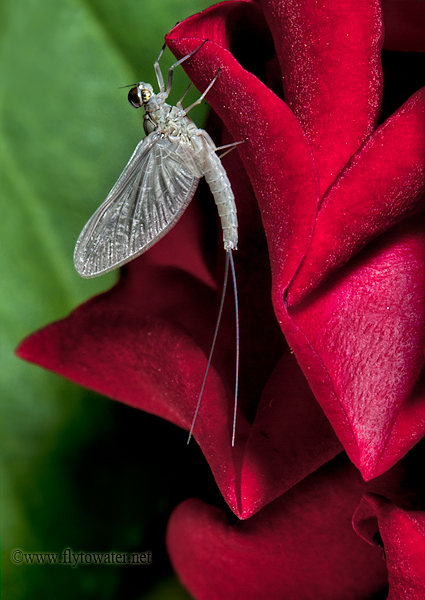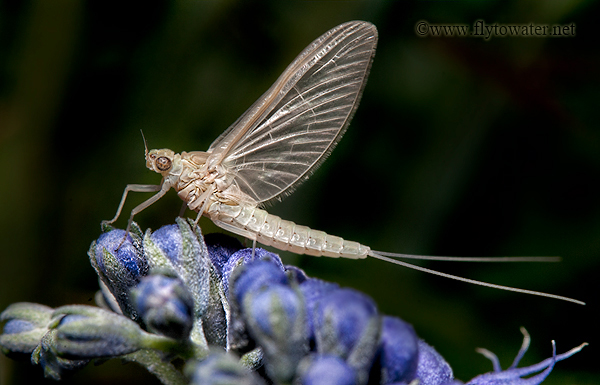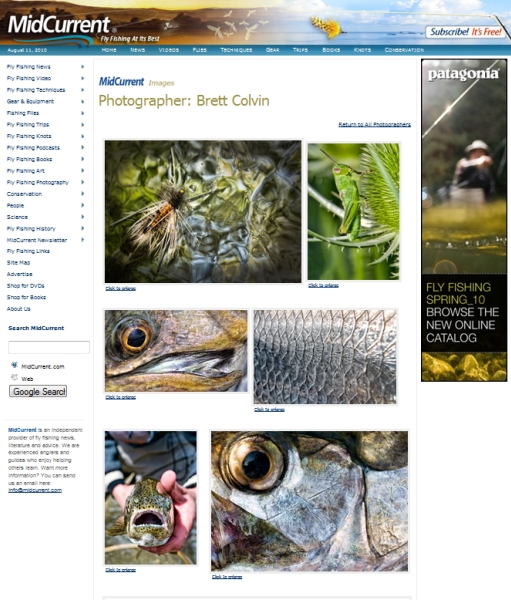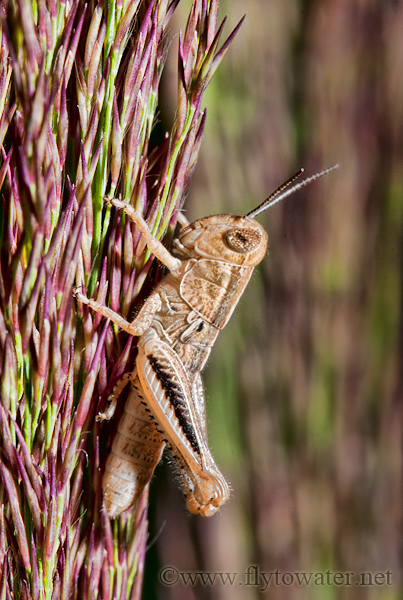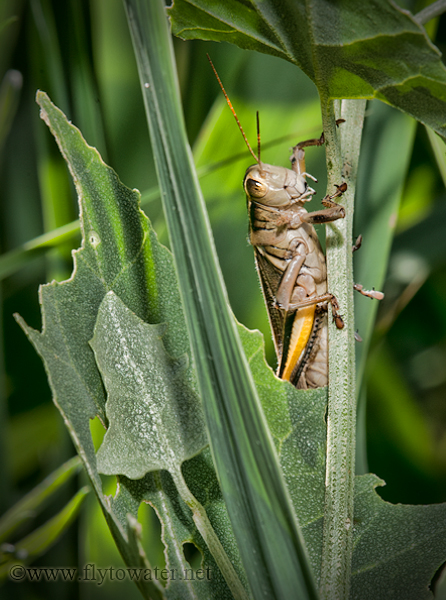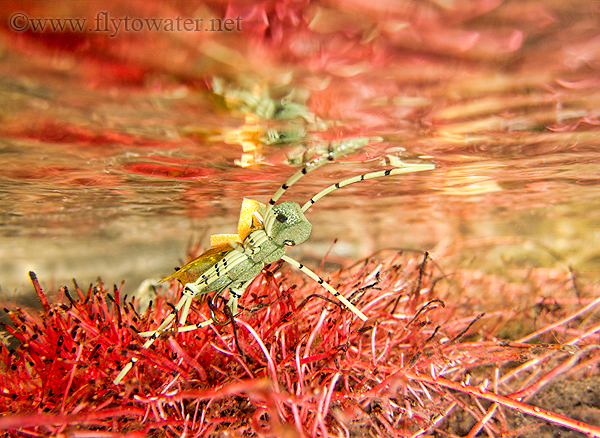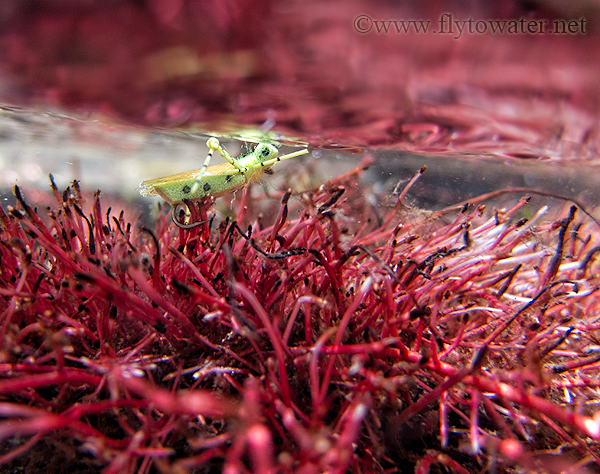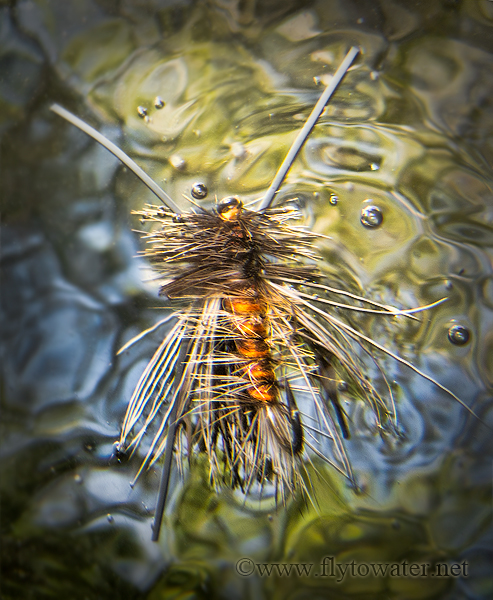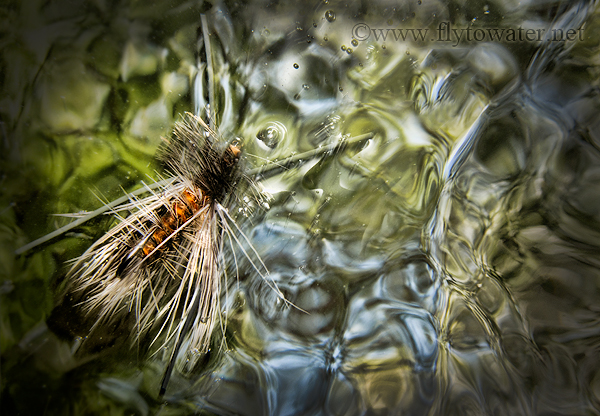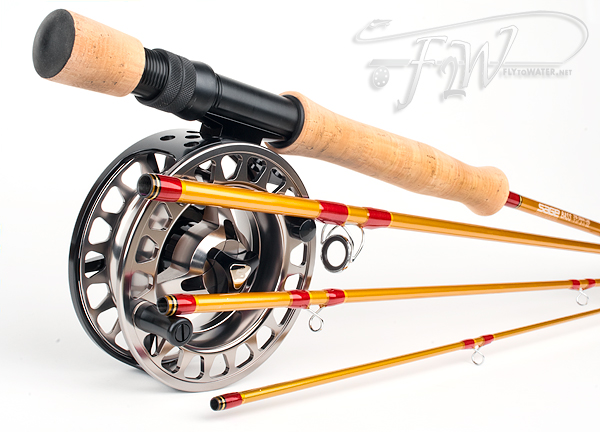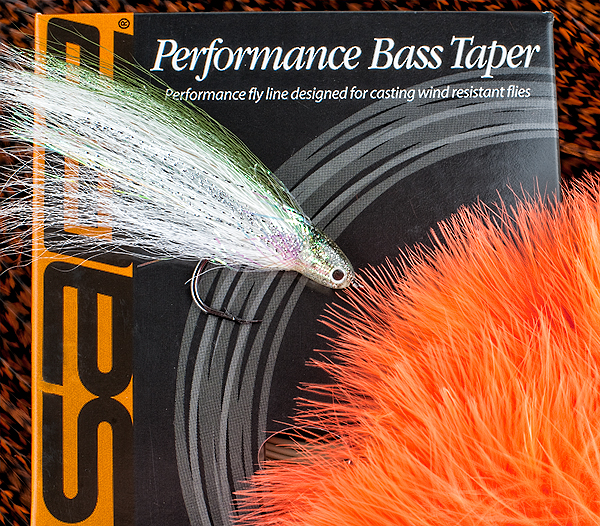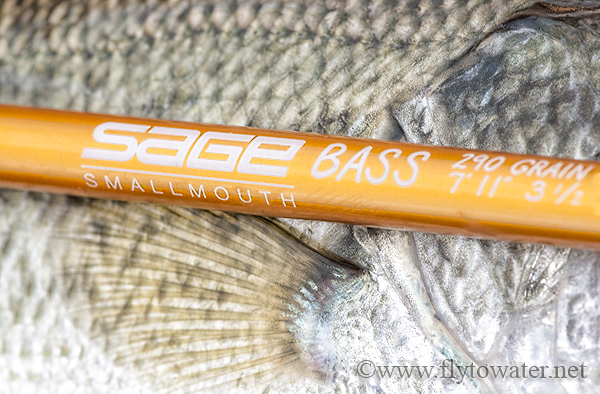Drinking. Stripping. Debauchery of biblical proportions.
These are not references to Las Vegas, but rather to an annual pilgrimage that I've heard spoken of in hushed tones by certain members of the fly fishing community. Over the years fragments of unsubstantiated rumor have reached my ears regarding this event, and I was aware that it took place in the vicinity of Island Park, Idaho. I had also heard tales of a mysterious cabin in the woods where unspeakable rituals were enacted, led by a man known only as Uncle Bob.
When an opportunity arose to pledge this fraternity of the fly, I jumped at the chance. Admittedly I was caught off guard when the stripping was performed by a man named Layne following a bizarre self-baptism episode in prime trout habitat. Had this information been disclosed at the outset I may have reconsidered, but hindsight is always 20/20.
Having met up with several well-established members of the Brotherhood of the Wading Pants, drift boats were immediately set afloat. I was instructed to board a vessel containing JayMorr, Layne, Brika (the trout-sniffing GSP), and Casey (who claims to be a guide for Worldcast Anglers). The guiding credentials would later be called into question.
Right off the bat it became apparent that Layne had not yet developed what the medical community commonly refers to as The Morrison Reflex. Anyone who regularly fishes with JayMorr instinctively grips their newest rod with Herculean force any time he approaches to within a 15-yard radius. This phenomenon is called a "reflex" because the action is triggered from the brain stem itself without conscious thought. Attempting to process proximity information in the cerebral cortex takes a split second, during which time JayMorr will have already secured the highest quality fly rod in the boat and made no less than 3 casts.
My own Morrison Reflex has been honed to the very limits of mammalian capacity. Adopting a threat posture between Jay and my favorite 6-weight, I was not surprised to see a blur-like motion in the vicinity of Layne's brand new Sage Z-Axis. Before the anchor had even grazed the river bottom at our first wade fishing location, my ears caught the faint swishing of wader legs scissoring through the current as JayMorr vectored across the river with Layne's virgin graphite glinting faintly in his hand.
"Whoops I think Morrison just grabbed my Z-Axis by mistake," stammered Layne. Casey, Brika, and I all enjoyed some hearty laughter from this classic 1-liner.
"Good thing you brought that ultralight dry fly rod as a spare," I remarked, still chuckling at Layne's hilarity. "It's not ideal for articulated streamers with lead eyes, but you'll get used to it."
Jay then proceeded to catch the first fish ever on the new rod - a nice rainbow - while Layne feverishly attempted to throw a size 4 weighted stonefly setup under a voluminous indicator using his delicate dry fly rig.
It was around this time that Casey's guide credentials began to appear suspect in my opinion. I will mention here that he invariably displayed expert skills as an oarsman, read the river with great wisdom, and provided perfect advice about fly selection and fish location.
As it turns out, Casey has Angler's Tourette Syndrome, or ATS. This condition causes him to suddenly yell out the term "26-inch brown trout!" at socially inappropriate times.
For example, at one point he made the comment, "Yesterday I saw a pair of TWENTY-SIX INCH BROWN TROUT! near the head of this run." Fishing the location resulted in catching a pair of mountain whitefish. This scenario repeated itself until it became a pattern, and at the time of this writing I'm not certain that Casey can actually tell the difference between a 26-inch brown trout and a W.O.U.S. (Whitefish Of Unusual Size).
Brown trout may not be the only species impacted with mistaken identity either. Later in the float, Casey positioned himself on a bridge and began directing Layne into a particularly deep and swift run. "If you can work your way out another 20 feet, there's a TWENTY-PLUS INCH RAINBOW TROUT! holding near the seam." Unbeknown to me at this time was Layne's nickname of Captain Nemo, which he has acquired over the years due to his propensity for spontaneous full-body immersion in bodies of water all across the hemisphere.
Without warning, Layne suddenly began performing what I can only describe as a series of Russian Squat Kicks in the middle of the river, culminating in a maneuver that left only his eyeballs exposed above the surface of the water. It seems as though the purpose of full submersion was to obtain maximum purchase on the riverbed, because he then shot out of the water like a Trident Missile and headed for shore at planing speed. The remainder of the story is not suitable for young viewers, but suffice it to say that images from those events remained emblazoned on my retinas well into the blackness of the ensuing night.
After Layne went under, Casey again commenced gesturing wildly and yelled, "Colvin! If you can just make it 20 feet beyond where Captain Nemo filled his waders and nearly got swept downstream that fish is still there!"
Mentally pushing aside everything I had just witnessed, I braced myself against the current and worked my way into a precarious position for a chance at this slab rainbow. Finally, as my rubber-soled boots began losing traction on the mossy cobblestones and the water was lapping at the top of my chest waders, I wedged my foot against a rock and cast into the seam. "Perfect!" Casey announced. Midway through the drift I tied into the fish, and had to reverse my route back towards shore while the fight was underway.
Eventually I negotiated the hazards successfully and landed my quarry - a Whitefish Of Unusual Size.
There is much more to the story than what I have recounted here, but in yet another similarity to Las Vegas...
What happens at Bob's cabin stays at Bob's cabin.
Many thanks to Bob, Jason, Mike, Casey, Layne, Brika, and JayMorr for the great time I had on the trip. I enjoyed time on the water, tremendous hospitality at the cabin, and friendships both old and new.
Friday, October 22, 2010
Uncle Bob's Cabin
Labels:
Brook Trout,
Clouds,
Dog,
drift boat,
fly fishing,
Fork,
German Shorthaired Pointer,
Henrys,
Idaho,
Lake,
Photography,
rainbow trout,
River,
Storm,
Wooden
Thursday, September 9, 2010
Greek, Latin, and Mayflies
In Greek, the word "ephemeros" means "short-lived." No one knows why early Greeks chose this term instead of just saying "short-lived."
What we do know is that Order Ephemeroptera is used by scientists to refer to mayflies (presumably because adults are short-lived), and that Greece is bankrupt due to poor toga sales and obfuscation.
However you refer to them, mayflies fascinate fly fishermen (LintFlickus Hookibilis - From Latin, literally meaning "Hooks himself with lint").
Anglers have limited numbers of brain cells by adulthood. Many can attribute this to the cerebral pickling effect of 18-year LAPHROAIG, while others may not have had substantive numbers at birth. Either way, the considerable mental horsepower given to mayflies is noteworthy. For example, when we see a member of Order Diptera, Family Chironomidae floating down the river, the angler may casually refer to the insect as a "midge."
By contrast, when seeing a speckled mayfly on the water, a field identification of "callibaeits" will invariably be used. True, we sometimes cheat and shorten terms like Hexagenia to "Hex" but everyone knows what is implied: If you can't say something smart, say it in Latin.
The mayfly may actually be the "fly" in fly fishing. After all, one of the earliest references to fly fishing (circa 200 AD by Ælian) describes what many believe to be dun imitations.
Hopefully there's a hatch coming to a water near you.
What we do know is that Order Ephemeroptera is used by scientists to refer to mayflies (presumably because adults are short-lived), and that Greece is bankrupt due to poor toga sales and obfuscation.
However you refer to them, mayflies fascinate fly fishermen (LintFlickus Hookibilis - From Latin, literally meaning "Hooks himself with lint").
Anglers have limited numbers of brain cells by adulthood. Many can attribute this to the cerebral pickling effect of 18-year LAPHROAIG, while others may not have had substantive numbers at birth. Either way, the considerable mental horsepower given to mayflies is noteworthy. For example, when we see a member of Order Diptera, Family Chironomidae floating down the river, the angler may casually refer to the insect as a "midge."
By contrast, when seeing a speckled mayfly on the water, a field identification of "callibaeits" will invariably be used. True, we sometimes cheat and shorten terms like Hexagenia to "Hex" but everyone knows what is implied: If you can't say something smart, say it in Latin.
The mayfly may actually be the "fly" in fly fishing. After all, one of the earliest references to fly fishing (circa 200 AD by Ælian) describes what many believe to be dun imitations.
Hopefully there's a hatch coming to a water near you.
Labels:
Callibaetis,
Closeup,
fly fishing,
Macro Photography,
Mayfly,
Super,
Supermacro
Wednesday, August 11, 2010
Midcurrent³
MidCurrent is a healthy part of a fly fisherman's balanced diet. I have been dropping in regularly for a long time due to the well-written articles, knot tying tutorials, podcasts, industry news, and other information that is always readily available.
I have really enjoyed the addition of dedicated sections for featured fly fishing artists and photographers. If you haven't dropped in for a while, definitely check out:
THE ARTIST GALLERY
THE PHOTOGRAPHER GALLERY
I'm honored to have been featured for the 3rd time this week for some of my recent images dealing with summer fly fishing. Clicking on the image below will take you to the updated feature page.
I have really enjoyed the addition of dedicated sections for featured fly fishing artists and photographers. If you haven't dropped in for a while, definitely check out:
THE ARTIST GALLERY
THE PHOTOGRAPHER GALLERY
I'm honored to have been featured for the 3rd time this week for some of my recent images dealing with summer fly fishing. Clicking on the image below will take you to the updated feature page.
Labels:
Bird Photography,
Brett Colvin,
Feature,
Midcurrent,
Photographer
Monday, August 9, 2010
The Hopper
Walt Whitman didn't write much about hopper patterns, but if he had it probably would have gone something like this:
O Hopper my Hopper! Our fishing trip is done,
The line has weathered every cast, the prize we sought is won,
The stream is near, the gurgle I hear, the terrestrials are raging,
With watery eyes the trout apprise, the hopper grim and daring;
But O hop! Hop! Hop!
O the deer hair bullet head,
Where on the current my hopper lies,
Drifting foam and thread.
Why did Whitman avoid the topic of hoppers? It's hard to say. Historians all agree that he was part of the Transcendentalist movement. As everyone knows, this was the idea that fishermen could transcend (rise above) bait and use artificial flies instead.
This in turn gave way to Realism, which was a period where fly tiers spent copious amounts of time making their flies look as real as possible. Beginning in 1865, Realism essentially ended in 1910, although no one informed Graham F. Owen. Residing in Burbank, California, Graham guffaws at historians and continues to tie flies so realistic that several reasonably intelligent movie producers have mistaken them for actual insects. Many of his life-like creations have taken since 1892 to complete, making them contemporaries of Whitman himself.
Realism eventually gave way to Naturalism. This was a time characterized by the more unpleasant and even shocking aspects of fly fishing. Patterns took on an impressionistic look and the hopper, while not embraced, became increasingly common. Naturalism was more of a movement than a formalized period, but was also closely linked to Determinism - wherein man's life came to be dominated by hatches beyond his control and the biological instinct to prefer dry flies over nymphs.
Regardless of the reasons that hoppers were once taboo, society has progressed to a certain extent. Sure, there are still anglers who will only publicly admit to throwing flies the size of dinoflaggelate algae. During the summer months however, even the most haughty of purists will conjure a gluttonous stash of gigantic hopper patterns at the first sound of a splash.
Happy Hoppertime!
O Hopper my Hopper! Our fishing trip is done,
The line has weathered every cast, the prize we sought is won,
The stream is near, the gurgle I hear, the terrestrials are raging,
With watery eyes the trout apprise, the hopper grim and daring;
But O hop! Hop! Hop!
O the deer hair bullet head,
Where on the current my hopper lies,
Drifting foam and thread.
Why did Whitman avoid the topic of hoppers? It's hard to say. Historians all agree that he was part of the Transcendentalist movement. As everyone knows, this was the idea that fishermen could transcend (rise above) bait and use artificial flies instead.
This in turn gave way to Realism, which was a period where fly tiers spent copious amounts of time making their flies look as real as possible. Beginning in 1865, Realism essentially ended in 1910, although no one informed Graham F. Owen. Residing in Burbank, California, Graham guffaws at historians and continues to tie flies so realistic that several reasonably intelligent movie producers have mistaken them for actual insects. Many of his life-like creations have taken since 1892 to complete, making them contemporaries of Whitman himself.
Realism eventually gave way to Naturalism. This was a time characterized by the more unpleasant and even shocking aspects of fly fishing. Patterns took on an impressionistic look and the hopper, while not embraced, became increasingly common. Naturalism was more of a movement than a formalized period, but was also closely linked to Determinism - wherein man's life came to be dominated by hatches beyond his control and the biological instinct to prefer dry flies over nymphs.
Regardless of the reasons that hoppers were once taboo, society has progressed to a certain extent. Sure, there are still anglers who will only publicly admit to throwing flies the size of dinoflaggelate algae. During the summer months however, even the most haughty of purists will conjure a gluttonous stash of gigantic hopper patterns at the first sound of a splash.
Happy Hoppertime!
Friday, July 23, 2010
Trout's Eye View
If you ever find yourself in dire need of kicks, giggles, and a rousing good time - get out and take some underwater photos of a dry fly that is drifting with the river's current from a rising trout's perspective.
Oh, sure, there are some technical challenges but who doesn't love a good case of galloping trapezius spasms?
Oh, sure, there are some technical challenges but who doesn't love a good case of galloping trapezius spasms?
Labels:
fly fishing,
Macro Photography,
Photography,
Salmonfly,
Stonefly,
Underwater
Friday, July 16, 2010
SAGE BASS +++
Go out and get yourself a Sage Bass rod.
You may reply (with the appropriate expression of trout snobbery):
"My good man, I do not like to fish for bass.
I do not have flies in my box...
The size and shape of a fox.
I do not chase bass here nor there,
I do not baitcast anywhere!
I will not throw a muskrat mouse,
There are no poppers in my house!
I do not chance to fish for bass,
Green big-mouths can kiss my @$$."
Well, GET ONE ANYWAY. You will take it on a train. You will carry it on a plane. You will pack it here and there. You'll end up casting it everywhere.
It has been a long time since a fly rod has put the type of smile on my face normally reserved for children under the age of 8 on Christmas morning.
Adjectives like fast, smooth, precise, powerful, accurate, or light weight tend to surface during most initial casting sessions, but rarely the type of spontaneous FUN that I experienced fishing the Sage Bass lineup.
There is something about a short (7'11") fly rod that was unexpected when coupled with a lot of backbone (the Smallmouth is probably best described as an 8/9wt, and the Largemouth is even more stout). I've fished plenty of short rods, but they tend to be delicate little 3-weight jobs designed to land spore-sized flies with nary a ripple on the pristine surface of a mountain stream.
The BASS series stands apart. These rods are at home flinging flies the size of a pygmy marmoset through the atmosphere and splashing them down with pinpoint accuracy on the exact lily pad that is covering a mouth cavernous enough to consume it.
If you are interested in the BASS sticks, you probably already know that much. There are plenty of reviews and videos provided by the retail industry that talk about the strengths of this rod family. They will all tell you that the length and taper produce accurate, short to medium length presentations with a minimum of false casting. It's all true.
Sage provides a nice package too, with an embroidered rod/reel case and a line that has been custom designed for the rod of your choice. When comparing prices, keep in mind you are getting a premium line and very nice combo tube as part of the deal.
The color scheme is eye catching too, and there is no mistaking the BASS lineup on the water.
Oh, and I almost forgot, you can catch bass with them too.
What you may not know is that despite the all-caps BASS insignia, this platform is really flexible and will surprise you with its non-bassy capabilities.
First of all, these rigs have leverage. If you are chasing anything where structure poses a problem, you'll dig these sticks. Among the applications where BASS rods are getting traction: Snook, baby tarpon in the mangroves, pike, muskie, salmon, and more. There is a lot of fighting and head-turning power in this kind of stump puller.
PLUS, they roll cast like CRAZY. There's a place I fish chironomid rigs for trout, with a 1" diameter slip indicator, droppers, and a long leader. The bank is very steep and back casts are Hell's own fun. The Smallmouth turns over the whole setup beautifully while maintaining respectable distance by taking advantage of the short rod's compact roll casting stroke.
The Sage
Support your local fly shop and pick one up at a Sage dealer near you, or check out RIVERBUM if online shopping is more your style.
Labels:
Bass,
Fly Rod,
Largemouth,
Review,
Sage,
Smallmouth
Friday, June 25, 2010
A Vizsla by any Other Name
Clifford the Big Red Dog is a familiar character to most, and is famous enough to have his own TV show on PBS Kids. He has a friendly, outgoing, and generally helpful attitude 80% of the time. The remaining 20% consists of an impish propensity for involvement in mischievous indiscretions.
What most people don't know is that Clifford's appearance, attitude, and "Yes, this disaster happened but it's not my fault" approach to life is based on the Vizsla - a pointing dog breed of Hungarian descent that many (even within the dog-owning community) have never heard of.
In 2009, the Vizsla ranked 42nd on the AKC's list of popular breeds, below Red Blooded Coonhounds but well ahead of Bluetick Coonhounds (all of which blew the Chinese Shar-Pei out of the water at a disappointing 47th).
As a public service, I hereby offer up a short Q&A tutorial on the proper way to interact with the Vizsla, and the socially peculiar and idiosyncratic Vizsla Owner.
Q: I lost my copy of Hooked on Hungarian Phonics®, can you tell me how to pronounce the word "Vizsla"?
A: Certainly. The close proximity of the "Z" and the "S" will easily overwhelm the unprepared mind, so pay close attention. Misuse of the term will forever brand you as a blabbering ignoramus, while a crisp delivery is sure to elevate your social status immediately.
Correct: VEESH-Luh
Incorrect: VISH-Luh
Epic Fail: VIZZ-Luh
Q: What happens if I refer to a Vizsla as a "VISH-Luh" when addressing a member of this stately breed?
A: If you commit such a careless faux pas, the Vizsla will look upon you as an aberration of nature, having correctly identified you as an intellectual inferior.
Q: How will the Vizsla Owner react to a similar mispronunciation?
A: Imagine showing up to an exhibitionist dinner gala with a festering case of the crusted Norwegian scabies. No amount of salve after-the-fact will truly erase such a breach of social etiquette. Having slighted the entire Hungarian/Magyar heritage in this process, anyone within ear shot will thereafter snub your wretchedness.
Q: How do I avoid these potentially ruinous consequences?
A: Practice the correct pronunciation in private well in advance of contact with your Vizsla or Vizsla Owner. This will result in what scientists refer to as "tongue memory," which will help ensure a culturally accurate delivery under pressure.
Q: How can I proactively work my polished pronunciation of "Vizsla" into a conversation?:
A: Do not appear overly eager and blurt out the term while greeting the Vizsla Owner. Wait for an opportune moment, then casually allow the syllables to lilt off your tongue:
"I can't help but notice that your VEESH-Luh is making off with my dinner jacket. Adorable!"
Such an approach will invariably identify you as a mature, sophisticated, and highly intelligent canine connoisseur. A successful delivery may eventually open doors you never before thought possible.
Having completed this Q & A session, you are now ready for additional exposure to the Vizsla. Feel free to use the remaining images in this post as partners in your role playing.
The last few weeks I've taken a fishing hiatus to spend some time in the field with Dusty, my 1-year-old Vizsla pup. He is a double handful at this stage, but is extremely biddable, eager to please, and affectionate - which is typical of the breed.
If you're in the Utah area and are interested in a Vizsla down the road, contact Josh McPherson of Hillbillie Vizslas. Pups from his litters are among the best anywhere.
Gun Dog Breeders is also a good source of Vizsla breeders nationwide.
If you would like to learn more about the history, standards, and what to expect when owning a Big Red Dog, Marion Coffman's book Versatile Vizsla is a great place to start.
What most people don't know is that Clifford's appearance, attitude, and "Yes, this disaster happened but it's not my fault" approach to life is based on the Vizsla - a pointing dog breed of Hungarian descent that many (even within the dog-owning community) have never heard of.
In 2009, the Vizsla ranked 42nd on the AKC's list of popular breeds, below Red Blooded Coonhounds but well ahead of Bluetick Coonhounds (all of which blew the Chinese Shar-Pei out of the water at a disappointing 47th).
As a public service, I hereby offer up a short Q&A tutorial on the proper way to interact with the Vizsla, and the socially peculiar and idiosyncratic Vizsla Owner.
Q: I lost my copy of Hooked on Hungarian Phonics®, can you tell me how to pronounce the word "Vizsla"?
A: Certainly. The close proximity of the "Z" and the "S" will easily overwhelm the unprepared mind, so pay close attention. Misuse of the term will forever brand you as a blabbering ignoramus, while a crisp delivery is sure to elevate your social status immediately.
Correct: VEESH-Luh
Incorrect: VISH-Luh
Epic Fail: VIZZ-Luh
Q: What happens if I refer to a Vizsla as a "VISH-Luh" when addressing a member of this stately breed?
A: If you commit such a careless faux pas, the Vizsla will look upon you as an aberration of nature, having correctly identified you as an intellectual inferior.
Q: How will the Vizsla Owner react to a similar mispronunciation?
A: Imagine showing up to an exhibitionist dinner gala with a festering case of the crusted Norwegian scabies. No amount of salve after-the-fact will truly erase such a breach of social etiquette. Having slighted the entire Hungarian/Magyar heritage in this process, anyone within ear shot will thereafter snub your wretchedness.
Q: How do I avoid these potentially ruinous consequences?
A: Practice the correct pronunciation in private well in advance of contact with your Vizsla or Vizsla Owner. This will result in what scientists refer to as "tongue memory," which will help ensure a culturally accurate delivery under pressure.
Q: How can I proactively work my polished pronunciation of "Vizsla" into a conversation?:
A: Do not appear overly eager and blurt out the term while greeting the Vizsla Owner. Wait for an opportune moment, then casually allow the syllables to lilt off your tongue:
"I can't help but notice that your VEESH-Luh is making off with my dinner jacket. Adorable!"
Such an approach will invariably identify you as a mature, sophisticated, and highly intelligent canine connoisseur. A successful delivery may eventually open doors you never before thought possible.
Having completed this Q & A session, you are now ready for additional exposure to the Vizsla. Feel free to use the remaining images in this post as partners in your role playing.
The last few weeks I've taken a fishing hiatus to spend some time in the field with Dusty, my 1-year-old Vizsla pup. He is a double handful at this stage, but is extremely biddable, eager to please, and affectionate - which is typical of the breed.
If you're in the Utah area and are interested in a Vizsla down the road, contact Josh McPherson of Hillbillie Vizslas. Pups from his litters are among the best anywhere.
Gun Dog Breeders is also a good source of Vizsla breeders nationwide.
If you would like to learn more about the history, standards, and what to expect when owning a Big Red Dog, Marion Coffman's book Versatile Vizsla is a great place to start.
Subscribe to:
Posts (Atom)








